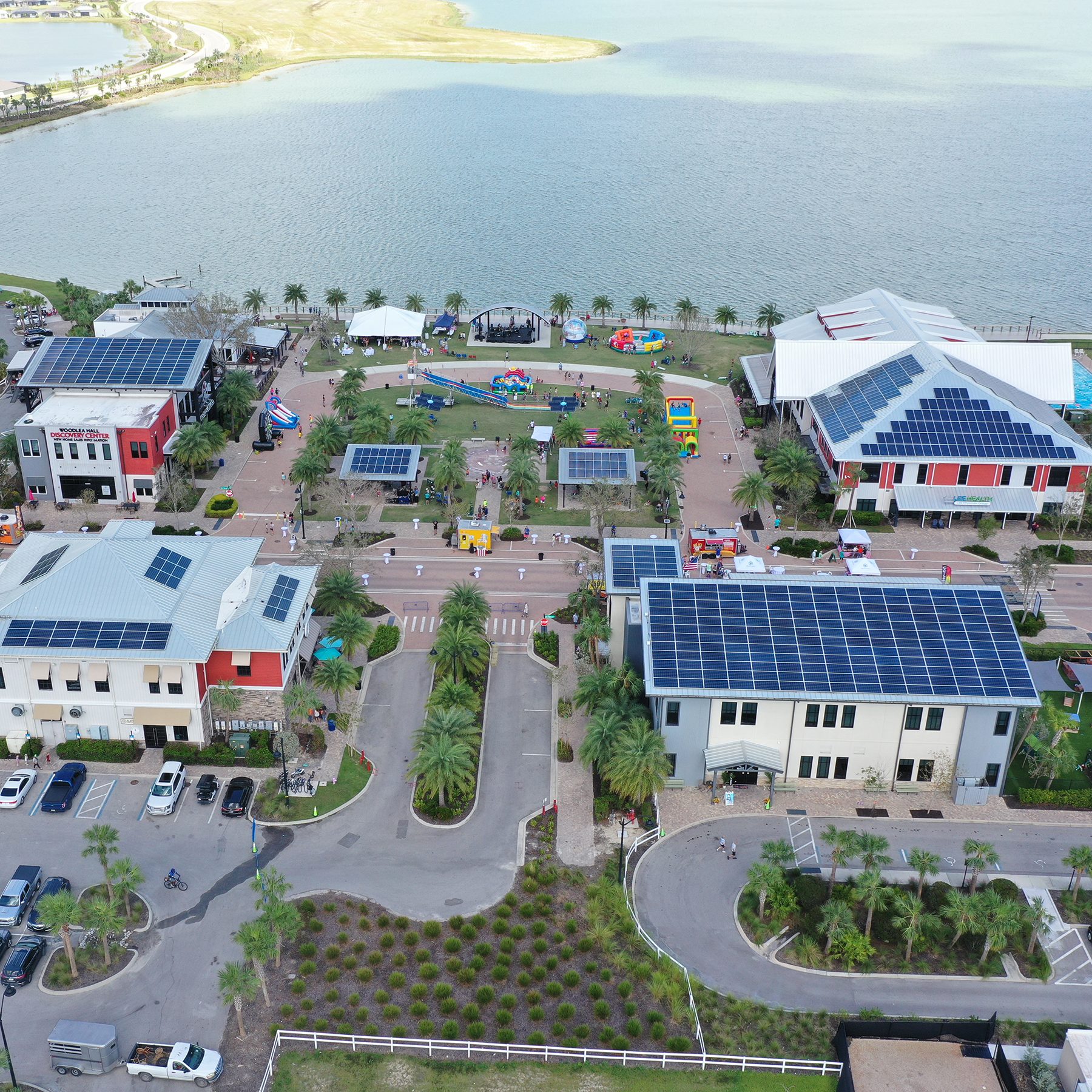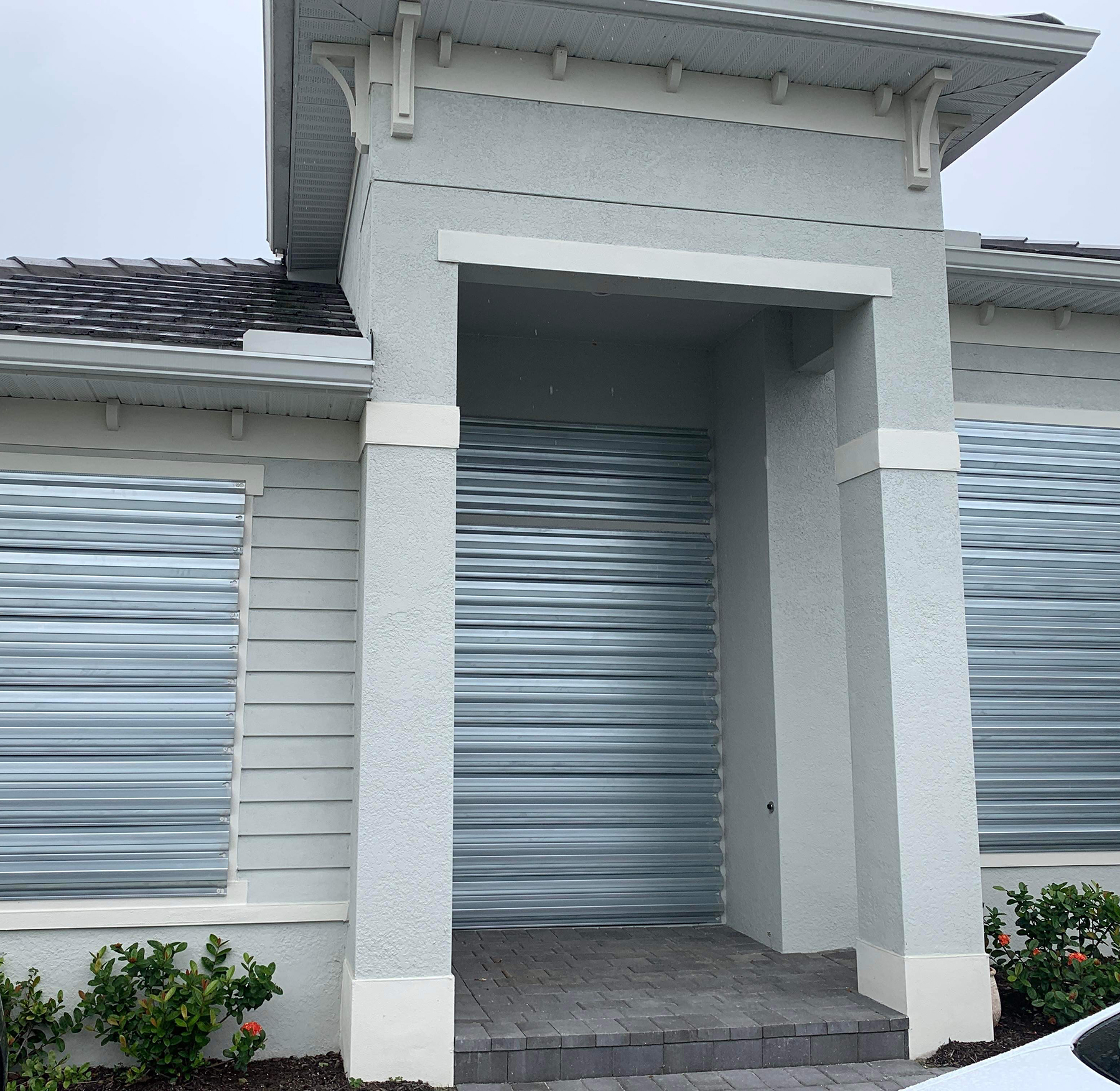By Sarah Derouin
Hurricane season is at hand, and unfortunately, outdated infrastructure, buildings falling below current codes, and increasing storm intensities can leave many coastal neighborhoods in dire straits.
The good news? Engineers are making great strides in keeping residents safer while tamping down the accompanying damage and costs that these storms can cause with days of torrential rainfall, wind gusts topping 200 mph, and sea surges inundating coastal communities. The official Atlantic Ocean hurricane season begins June 1 and ends Nov. 30, and those along the seaboard are getting ready like never before.

In 2023, weather and climate records were shattered – including July weighing in as the warmest on historical record. Severe weather events ripped through the U.S., leaving extreme damages in their wake. The National Oceanic and Atmospheric Administration tallied the damage and found that 28 disasters had losses exceeding $1 billion each. In total, damages from climate and weather events in the U.S. cost $93.1 billion in 2023, with almost $7 billion in damages caused by flooding.
As the climate continues to warm, developers and engineers are using the latest in resilience and green engineering approaches to keep communities safer. Babcock Ranch, a new development in southwest Florida that was designed from the ground up with resilient and green engineering solutions, has been a poster community for how to resist hurricane damage. The community has survived multiple hurricanes, including a direct hit from Ian in 2022, with only minimal damage.
The type of engineering seen at Babcock Ranch is easier to implement on a blank slate of land. Existing, already-built communities face the same threats but are often woefully unprepared to deal with the fierce and frequent hurricane deluge. To better protect communities and curb recovery costs, engineering investments and creative solutions must be made to mitigate damages for all coastal residents.
Engineering communities from the ground up
About 15 miles inland and 30 feet above sea level lies Babcock Ranch. Opened in 2018, the community has around 4,000 homes and is called “America’s first solar-powered town.” David Mercer, the former project manager and development director at Babcock Ranch, says that the late Fred Babcock, a lumber baron who once logged cypress in the area, once owned a 92,000-acre tract in southwest Florida. Most of the land was sold to the state of Florida for conservation purposes, but Syd Kitson, chair and CEO of Kitson & Partners, had a plan for the remaining 18,000 – a new community designed from the ground up with sustainability and self-sufficiency in mind.
Mercer notes that during the development planning process, incorporating sustainable engineering was top of mind. Homes were built on already-disturbed agricultural fields, and wetlands were left alone or bolstered with native plantings to extend the habitat for wading birds and help filter stormwater runoffs. Many of the ecological decisions for the development had trickle-down effects on nearby communities. “We’re trying to be good neighbors,” Mercer says.
In addition, old, abandoned lakes from rock mining were turned into retention lakes, and former drainage ditches were reused to usher water flow. Homes were built exceeding building codes, utilities were buried underground, and 50% of the land was kept as green space. Mercer says a large swath of land in the middle of the development was kept wild, connecting an important corridor for the Florida panther. The town also has its own solar array to provide power for the residents, businesses, and schools, even when the grid goes down.
One of the biggest concerns in this part of the world is dealing with hurricanes, especially the immense amount of rain that falls during a storm. “I think our biggest concern always is water,” says Jennifer Languell, Ph.D., a civil engineer and president and founder of Trifecta Construction Solutions, who helped design Babcock Ranch. During a storm, it’s not just the rain that falls on the development but also the water that makes its way downslope through Babcock Ranch to the Caloosahatchee River. “We've designed this community to take on additional stormwater from neighboring sites, specifically because the road adjacent to us would historically flood.”
Before starting to design, Languell says the team looked at historical photos to understand how water flowed in the area before the land was converted to agriculture. The team identified those natural conduits and restored and enhanced those pathways. The goal was to “mimic Mother Nature,” Languell says. “She’s gotten it right for many years – let's not reinvent the wheel.” The team supplemented the natural system with more engineered solutions, like linked retention lakes with multiple drainage outlets to move water around the development.
Beyond the big pathways for water flow, the engineering team also protected individual homes from flooding and power outages. Each house is built on a high point, with a V-shaped drainage pathway connecting the yard to the street. The idea is always to move the water away from the development, and there are multiple layers of engineering to help these efforts.
Resilient engineering
Hurricane intensity and rainfalls are projected to increase in the coming years. Damages to homes, infrastructure, and communities will also increase, tallying ever-rising costs. Engineering solutions that may have mitigated some storm damage in the past will likely not hold for the storms of the future.
Sandra Knight, Ph.D., a civil engineer and former Federal Emergency Management Agency administrator for mitigation, says Babcock Ranch is a good example of resilience engineering – an approach to design that surpasses today’s standards and focuses on long-term safety and durability. “Every day we’re hearing storms are ‘unprecedented,’ and that can’t be true – we’re not thinking hard enough or capturing the new realities of climate change,” Knight says. “When it comes to design, you have to consider the impossible and build for the inevitable. You have to think about what could go wrong.”
In the days after a major hurricane, access to electricity and clean water is crucial. “In a few days with no electricity in the South – and water on top of it – you now have a mildew problem,” Knight says. But when tested during Ian and other storms, Babcock Ranch maintained its basic lifeline systems and remained self-sufficient. Knight noted the successes at Babcock show that if a community is built with intention and investment on the front end, it will help in the long term.

Languell agrees, adding that investing in green and resilient engineering balances environment, economics, and the human, social element. Engineering solutions like those found at Babcock require additional investments, and businesses need to understand that commitment. But Languell points out that at Babcock, “Did we spend more money upfront? Absolutely. But did we contribute to the billions of dollars of damage (from Ian)? No.”
The successes of Babcock Ranch have garnered the attention of news organizations and developers. Mercer says in the months following Ian, developers from all over the country were calling Kitson asking why the team installed layers of resilient engineering and whether it cost substantially more. Mercer grinned and says that Kitson’s response was “’Cause we could … and no.”
Already-built communities
Babcock Ranch has proved it can withstand hurricane hazards, but it also had the benefit of being built from scratch with sustainability and resilience at top of mind. Established communities, especially those that are closer to the coastlines, do not have the same safeguards and engineering solutions built in.
Drawing on her experience in her former role at FEMA, Knight notes that the first step for resilience is ensuring dwellings are built outside high-hazard areas and adhere to updated building codes. But following close behind is the location and design of infrastructure, especially if it encourages development in risky places. She points to the Outer Banks in North Carolina as an example. “There’s a highway that goes all along the spine of the beach,” she says, and when a hurricane blows through, the highway is blown apart along with some of the homes.
Simply rebuilding isn’t a sustainable practice, she adds. Not only might a bigger, more robust road continue to fail, but it could create an even bigger catastrophe. “A road is essentially a linear dam,” Knight explains. “When you build a big infrastructure like that, where water can get up against it, then at some point it could fail like a levee does.”
While affluent people can rebuild or move out of high-risk areas, many residents along the coast live in homes or on land that has been part of their families for generations. Simply asking them to move or fund expensive upgrades to their homes is not an easy solution.
Along the coastal U.S., the number of affordable housing units at risk of flooding is expected to triple over the next 30 years. Knight notes that as a country, underserved communities have been put in the worst possible locations for withstanding climate change and storm hazards – and they have the least resources to recover when disaster strikes. For instance, in the 1830s, members of the United Houma Nation were forced to relocate from mainland Louisiana to the Isle de Jean Charles. Since 1955, residents on the island have seen 98% of the land erode away, and flooding has become a regular occurrence.
Knight says righting these injustices can be hard, and further complicated by breaking up communities that are culturally historic and multigenerational. Years after Hurricane Katrina hit the area in 2005, Knight says there were grants available for people to leave Isle de Jean Charles and settle somewhere else. “But people didn’t want to leave. … It’s their community,” she says. “That’s where they fish, it’s where they thrive.” A flooded community is still where home and history reside.
For existing communities, injecting hurricane resistance into neighborhoods will be a multipronged effort – and a substantial investment. It also has to be site-specific, says Mercer. “This construction (at Babcock) can’t be replicated in already-built communities, but parts can be reproduced,” he says. While creating lakes in the middle of a city may not be feasible, adding rain gardens and vegetation can help divert stormwater surges.
Resilient engineering solutions to storm damages will require investments and careful planning to better protect coastal communities. Knight says there has been some recognition of the problem by Congress and the White House in the past few years. She pointed to the Building Resilient Infrastructure and Communities grant program that helps communities mitigate natural hazards.
BRIC is a welcome expansion to FEMA’s predisaster mitigation grant program (a program in place during Knight’s tenure) and is bolstering equity and ecology efforts into storm resilience projects. She says the level of funding today is “on steroids” from a historical standpoint, but she cautions that while it is “getting some legs on it, it’s not there yet – it’s still not enough.”
This article is published by Civil Engineering Online.



